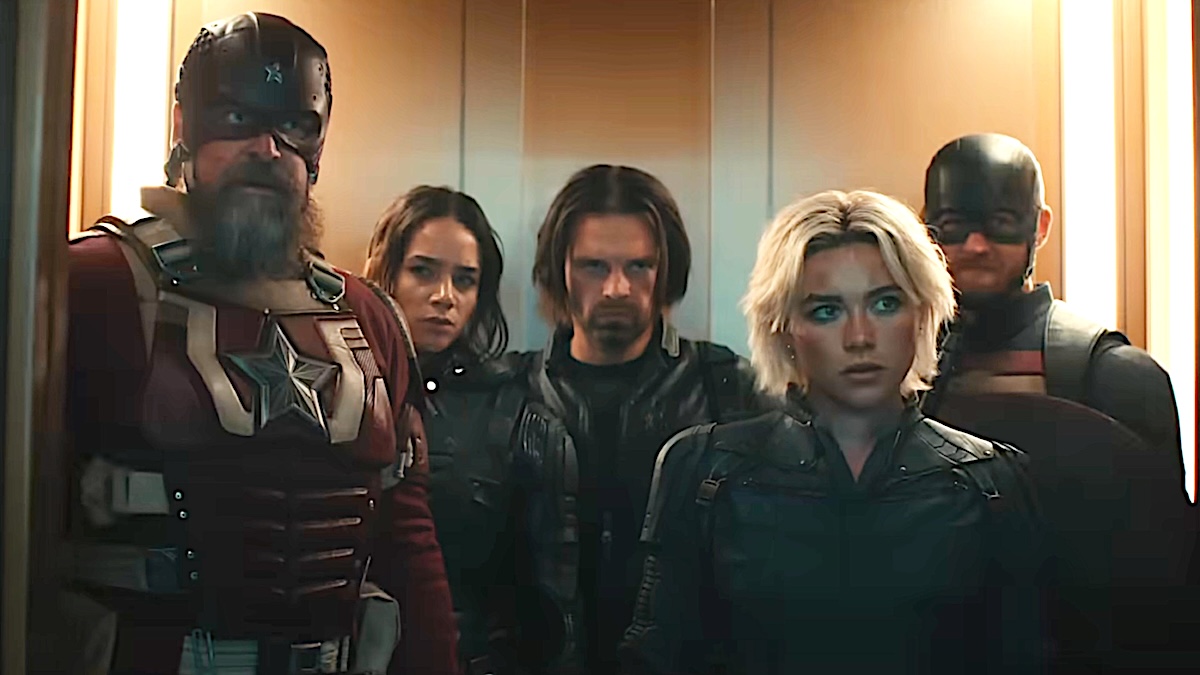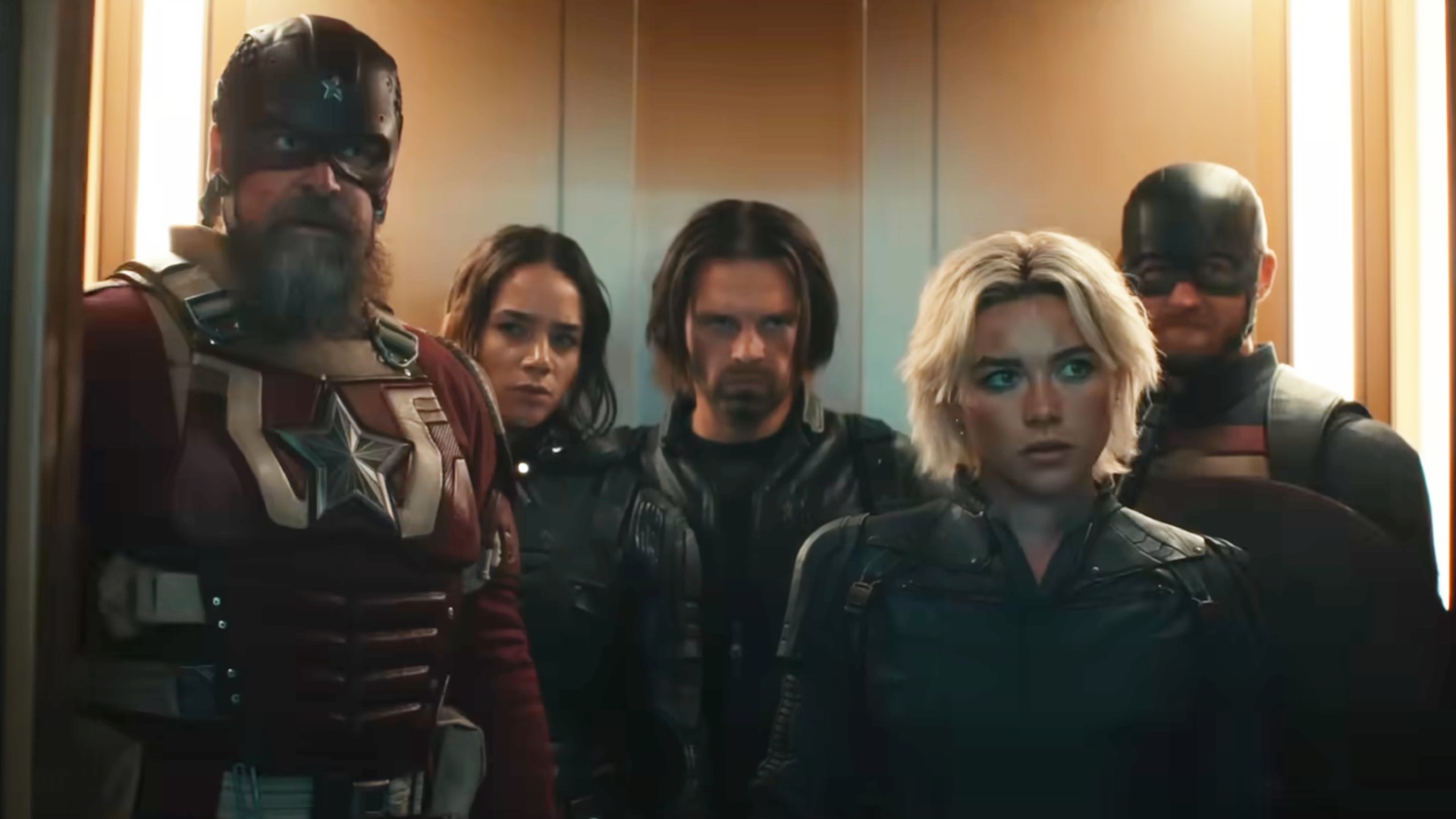Thunderbolts Review: the MCU's B-Team Rises to the Occassion
Marvel's shaggiest movie in ages proves to be a good time thanks to a winsome ensemble spearheaded by Florence Pugh.

And to the film’s credit, they all work as pieces in an affable ensemble largely thanks to shrewd casting. In the past, Stan and Harbour had their moments to shine, while Russell never quite got his. However, working from the assumption that nearly every character is someone’s favorite, Thunderbolts acts as a long breath where the MCU lets its hair down. It doesn’t necessarily amount to much, particularly with Jake Schreier’s workmanlike and streaming-serviceable direction, but it’s pleasant enough for two hours.
As a result the film feels less like either Suicide Squad movie or other films about “men and women on a mission” than it does a bottle episode. Indeed, almost the entire first hour is spent inside of and escaping the Vault, which probably proved economically sensible for Marvel after the runaway costs of February’s moribund Captain America 4. But it also means there is, again, a relative lack of CGI but perhaps a surplus of show floor space for amiable stars to trade barbs and disarm audiences.
There are occasional moments of visual enjoyment too, including a big one for Stan when the Winter Soldier comes riding on a motorcycle into the main narrative like Tom Cruise back in his M:I2 glory days. It makes you wonder how big of a star Stan might’ve been in a different Hollywood era, but in truth Thunderbolts plays to what appears to be his preference as judged by projects like A Different Man and I, Tonya. He loves inhabiting weirdos and sad sacks, and there is a definite sadness pervading throughout Thunderbolts.
Without giving too much away, a third act twist offers a surprisingly potent and all-ages accessible metaphor for depression as Pugh’s Yelena and the other also-rans are forced to face their own demons due to vague comic book superpower mechanics dipping Marvel’s toes into the surreal. We’d hesitate to say it is anywhere nearly as sophisticated as Pugh’s previous explorations of grief and trauma in, say, Midsommar (despite the star dubiously suggesting Thunderbolts plays like “an A24 movie”), but the sheer oddness of Thunderbolts’ climactic swerve reveals a gameness to try new things. Marvel is at last willing to stare into the darkness, if never long enough to unsettle anyone but the absolute youngest of audiences. (There is, though, one mildly freaky moment that might trouble parents with children under the age of 10.)
That willingness to at least glance in the shadows, and to just allow Pugh and Harbour extended scenes to reminisce about Yelena’s childhood on a terrible kids soccer team, gives Thunderbolts a personality and a point-of-view. It’s the first Marvel movie in a long while with a soul.
I suppose the real test, though, is the ending. Not how the heroes ultimately save the day. That is a foregone conclusion in this genre, and Thunderbolts ultimately remains determined to stick to the MCU’s formula. No, I mean the sequence that Marvel movies used to live or die by: the post-credits scenes. There are two of them in Thunderbolts, and one along with the very last moment before the end titles definitely leaves the status quo of the MCU upended and in a state of transition. For most of the last four or five years, these stingers have left me ambivalent toward what comes next, having just muddled through two hours in the middle of a road. Yet Thunderbolts positions the MCU in a place that piques curiosity instead of tedium.





















